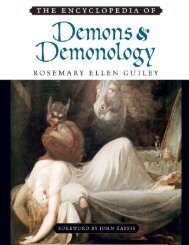DENIZENS OF ALIEN WORLDS
danizen1
danizen1
- No tags were found...
You also want an ePaper? Increase the reach of your titles
YUMPU automatically turns print PDFs into web optimized ePapers that Google loves.
93<br />
the canonical texts (for a debate on reform see IPS 1987). The greatest critic of the<br />
madrassa texts was Maulana Maududi who argued that, being based on memorization of<br />
medieval texts, the madrassas were not providing relevant education to the Muslim<br />
society (Maudoodi 1974).<br />
However, though old books like Sarf-e-Meer and Kafiya remain in the course,<br />
easier and more modern books are used to supplement them. Arabic, for instance, is<br />
taught through modern and much easier books than the canonical works mentioned in the<br />
Dars-i-Nizami (for details see Rahman 2002: 106-1-7). The canonical texts are taught in<br />
Arabic but, because students do not become really competent in the language, they are<br />
either memorized or understood from Urdu translations available in the market.<br />
The Dars-i-Nizami has come to symbolize the stagnation and ossification of<br />
knowledge. It is taught through canonical texts which, however, are taught through<br />
commentaries (sharh); glosses or marginal notes (hashiya) and supercommentaries<br />
(taqarir). There are commentaries upon commentaries explained by even more<br />
commentaries. For the South Asian students, they no longer explain the original text<br />
being themselves in Arabic. They have to be learned by heart which makes students use<br />
only their memory not their analytical powers. Indeed, the assumption on which the Dars<br />
functions is that the past was a golden age in which all that was best has already been<br />
written. What remains to the modern age is merely to preserve it.<br />
It was this backward-looking nature of core madrassa texts which made Taha<br />
Hussain (1889--1973), the famous blind modernist scholar of Egypt, disillusioned with<br />
Jamia Azhar in Cairo. According to Abderlarshid Mahmoudi, the writer of a book on<br />
Taha Hussain‘s education:<br />
On the collective level, entanglement in what was derivative and purely verbal,<br />
meant, among other things, the relegation of major and original works to oblivion.<br />
Thus a procedure whose role raison d’etre was to the conservation of tradition,<br />
resulted in a grave form of collective amnesia concerning what was best in<br />
Islamic culture, namely the classical heritage (Mahmoudi 1998: 20).<br />
What was true of Jamia Azhar in 1902 (when Taha went to that seat of learning)<br />
is judged to be true of South Asian madrassas, or at least the Dars-i-Nizami component












